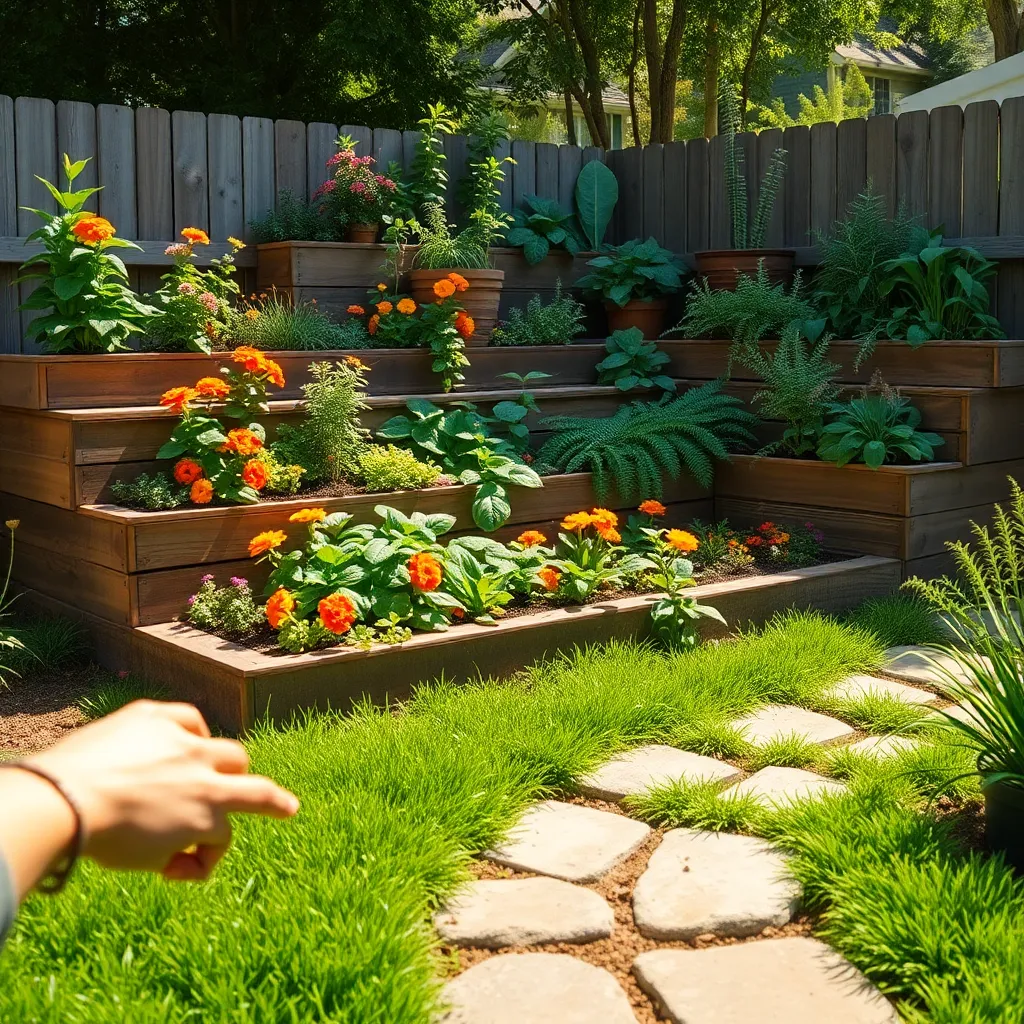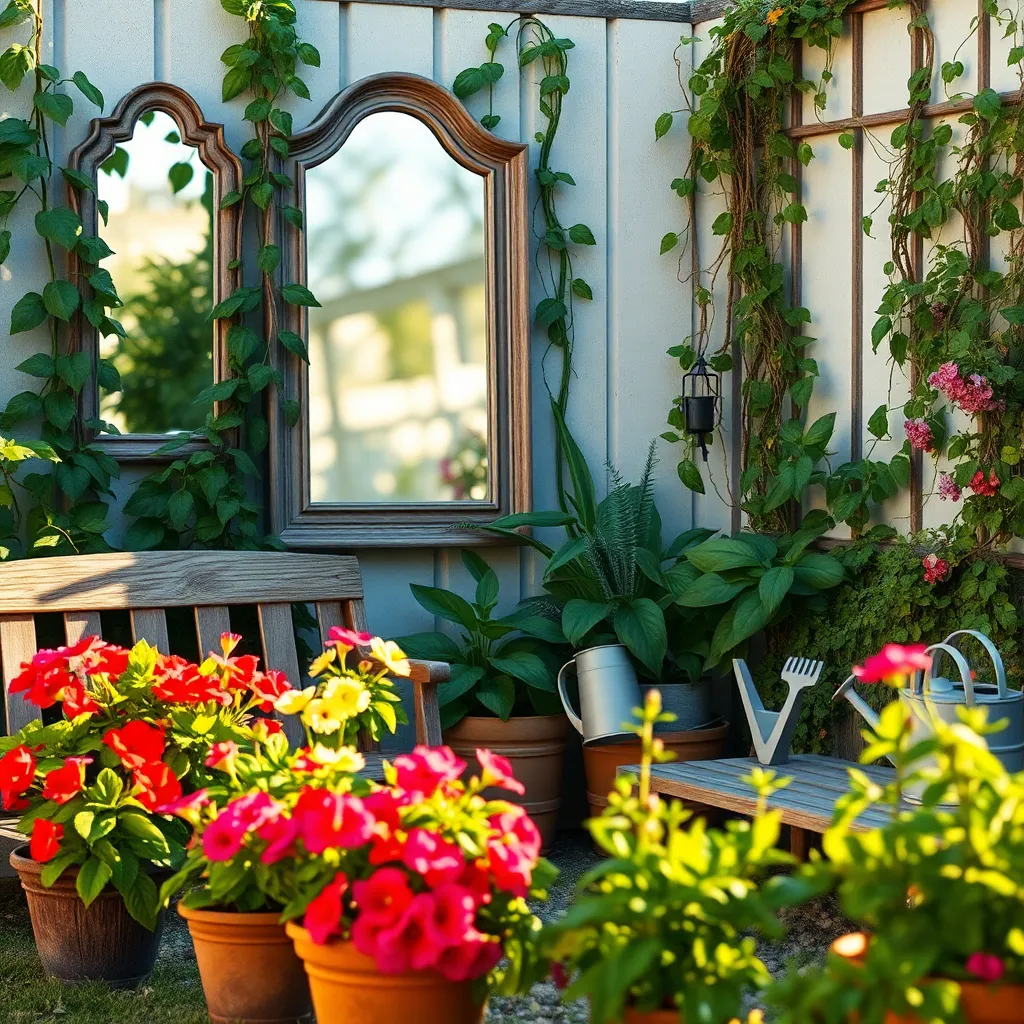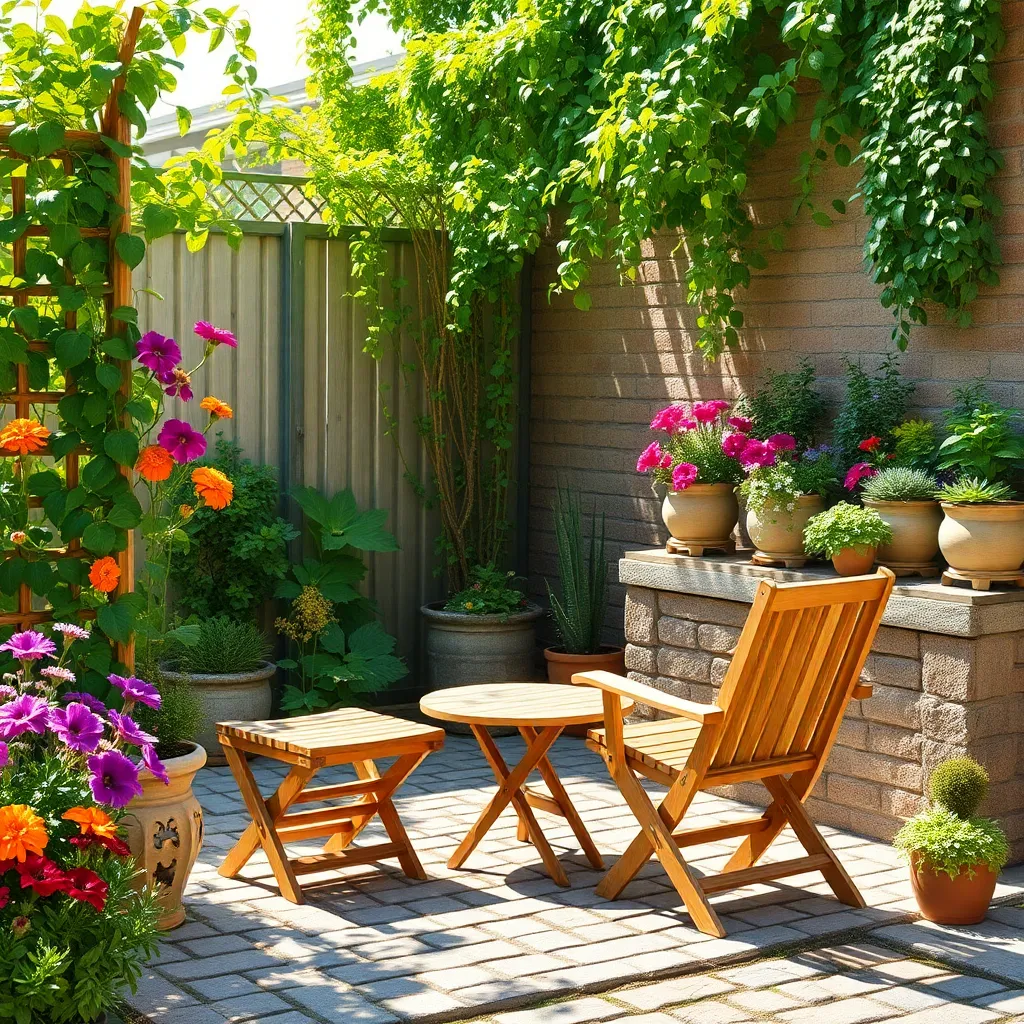Imagine stepping into your backyard and being greeted by a vibrant oasis that feels like an extension of your home. Whether you’re a seasoned green thumb or just starting your gardening journey, “Small Backyard Garden Design Ideas” is your ticket to transforming even the tiniest outdoor space into a lush and inviting paradise. Our guide is brimming with creative solutions and expert tips, ensuring that every gardener, regardless of experience, can cultivate a stunning garden that reflects their personal style and enhances their outdoor living experience.
With this guide in hand, you’ll uncover the secrets to maximizing small spaces, allowing you to enjoy the beauty and bounty of a well-designed garden without feeling overwhelmed. From clever layout strategies to plant selections that thrive in compact areas, our collection of ideas will empower you to create a garden that not only looks amazing but also serves as a peaceful retreat and a source of fresh produce. Get ready to dig in and discover the joy of nurturing a garden that not only enriches your life but also boosts your confidence as you watch your backyard flourish.
Maximize Space with Vertical Planters

Vertical planters are an excellent way to maximize space in a small backyard garden. By growing plants vertically, you can create a lush and productive garden even if you only have a tiny area to work with.
Consider using wall-mounted planters or freestanding vertical structures to grow a variety of plants. These can be perfect for herbs, strawberries, or even small vegetables like radishes and carrots.
Choose plants that thrive in the specific conditions of your vertical garden, such as sun-loving varieties if your structure is in direct sunlight. Ensure that your chosen plants have similar water and soil requirements to simplify care.
Use a lightweight, well-draining potting mix to provide the necessary nutrients and avoid overloading your vertical system. Regular watering is crucial, but be sure to allow for proper drainage to prevent root rot.
For advanced gardeners, consider integrating a drip irrigation system to keep your plants hydrated efficiently. This can save time and water, ensuring your vertical garden remains healthy and thriving with minimal effort.
Incorporate Multi-Level Garden Beds

Incorporating multi-level garden beds is an excellent way to make the most of a small backyard. By elevating some plants, you create a more dynamic landscape and can maximize sun exposure for each plant.
Consider using a mix of materials like wood, stone, or metal to build these tiered beds. They not only add visual interest but also allow you to grow a variety of plants with different sun and soil needs.
Plant taller species in the back or on the highest tier to ensure they don’t overshadow shorter plants. This can include vegetables like tomatoes or ornamental grasses that thrive in full sun.
For the mid-level, choose medium-height plants such as bush beans or marigolds, which can thrive in partial shade. Ensure these plants receive at least 4-6 hours of sunlight each day and are watered regularly, but not excessively.
On the lowest level, plant ground covers or low-growing herbs like thyme that can handle reduced light. These plants will help retain moisture in the soil, reducing the need for frequent watering and adding a lush, full look to your garden.
To maintain healthy soil in your multi-level beds, use a high-quality, well-draining potting mix. Incorporating compost or organic matter will provide essential nutrients and improve soil structure over time.
Choose Compact Plant Varieties

When working with a small backyard, selecting compact plant varieties is essential to maximize space. These smaller varieties can offer the same beauty and productivity as their larger counterparts while fitting neatly into limited areas.
Consider dwarf fruit trees, such as dwarf apple or cherry trees, which can thrive in containers or small patches of soil. These trees require well-draining soil and at least six hours of sunlight per day to produce a bountiful harvest.
For vegetable gardening, look for compact varieties of tomatoes, peppers, and cucumbers. Bush-type cucumbers, for example, grow well in tight spaces and require consistent watering to maintain healthy growth.
Herb gardens are also perfect for small spaces, with compact varieties of basil, thyme, and rosemary easily grown in pots. Ensure these herbs receive full sunlight and are planted in a lightweight, well-draining potting mix to prevent root rot.
Utilize Mirrors for Illusion of Space

Mirrors can be a transformative tool in small backyard gardens, creating an illusion of expanded space. By strategically placing mirrors on walls or fences, you can reflect light and greenery, making the area appear larger and more vibrant.
Consider using weather-resistant mirrors designed specifically for outdoor use to ensure durability. These mirrors will not only withstand the elements but also help to direct more sunlight onto shaded plants, promoting healthier growth.
For optimal effect, position mirrors where they can reflect attractive views, such as a blooming flower bed or a decorative water feature. This not only enhances the visual appeal but also creates a sense of depth, drawing the eye further into the garden.
Be cautious about the potential for mirrors to concentrate sunlight and inadvertently scorch nearby plants. To avoid this, tilt mirrors slightly downward or to the side, ensuring they capture light without causing damage.
Install Foldable Garden Furniture

Foldable garden furniture is an excellent addition to small backyards, helping you maximize your space without sacrificing comfort or style. Opt for pieces made from weather-resistant materials like treated wood or powder-coated metal to ensure durability throughout the seasons.
When selecting foldable furniture, consider pieces that are lightweight and easy to store, allowing you to quickly transform your garden into a functional area when needed. Look for designs that include built-in cushions or ergonomic features to provide extra comfort during longer gatherings.
Placing foldable furniture strategically can create distinct zones within your garden, enhancing its versatility. Position a foldable table and chairs near a sunny spot to enjoy morning coffee, or set them in a shaded area for afternoon relaxation.
For those with more advanced gardening skills, consider integrating foldable furniture with vertical planters to optimize space further. Use vertical planters with herbs or trailing plants that require minimal soil, and pair them with furniture that complements the greenery, creating a cohesive and inviting environment.
Conclusion: Growing Success with These Plants
In your journey to design a small backyard garden, you’ve unearthed five key relationship concepts that beautifully parallel cultivating a thriving partnership. First, nurturing communication is akin to selecting the right plants—essential for growth. Second, cultivating patience mirrors the slow, rewarding process of watching your garden bloom. Third, maintaining personal space is like designing thoughtful garden pathways, ensuring each element has room to flourish. Fourth, embracing change reflects the dynamic nature of both gardens and relationships. Lastly, fostering creativity allows for vibrant expressions of love and life.
Now, take a moment to step outside and envision how these principles can transform your backyard—and your relationships. Begin with a simple garden plan, then discuss it with a loved one to apply these insights collaboratively.
For continued growth and inspiration, bookmark this article. It’s a resource you’ll want to revisit as you cultivate both your garden and your relationships. Remember, a flourishing relationship, much like a well-tended garden, thrives on consistent care and attention. By applying these insights today, you are planting the seeds for a harmonious and enduring connection. Here’s to your blossoming journey of relationship success!

